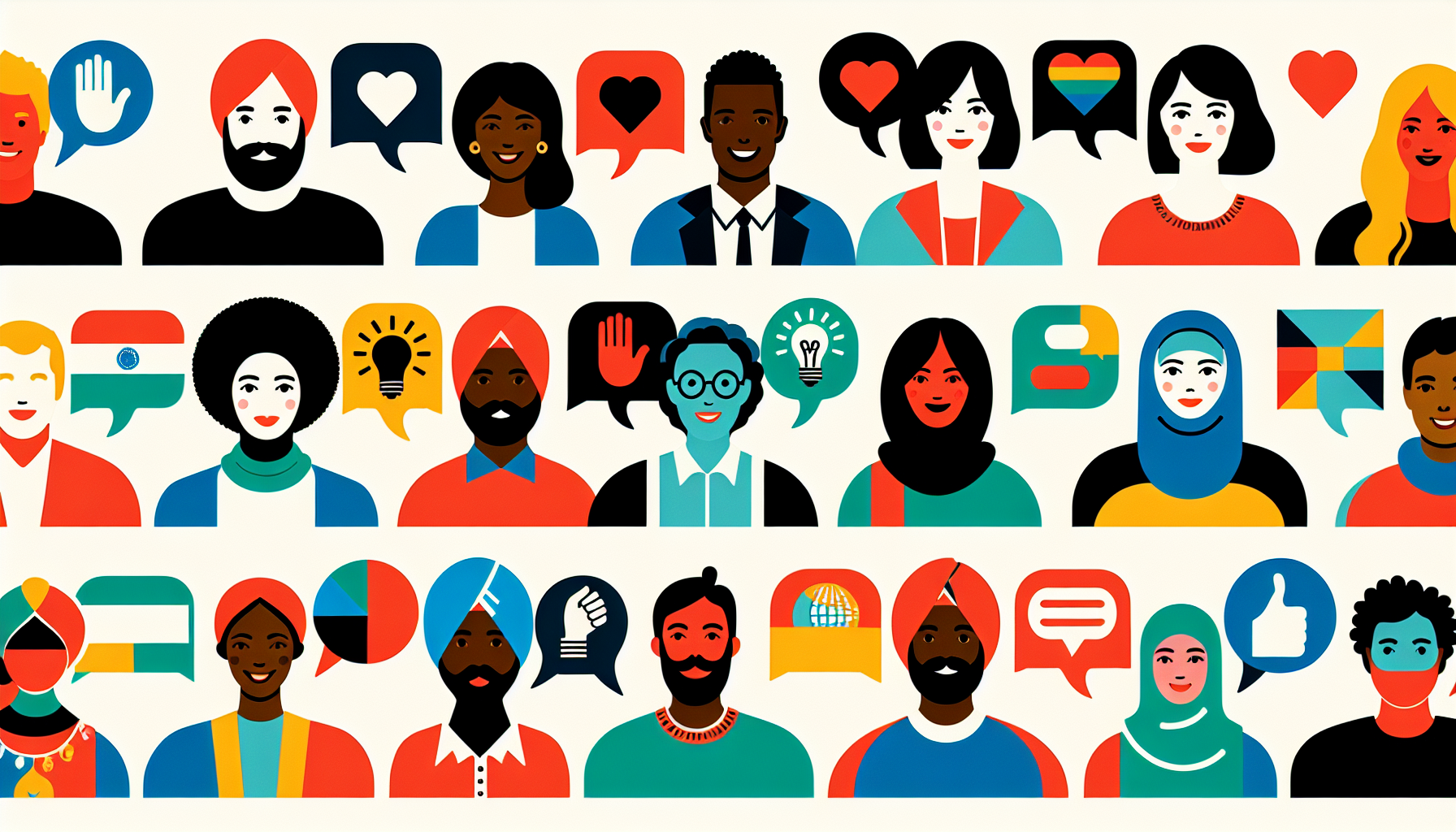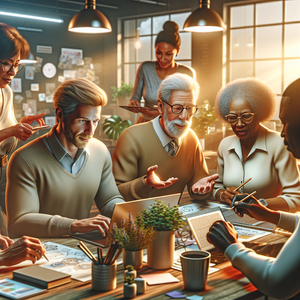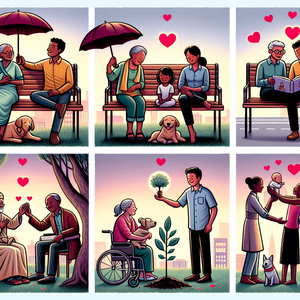The Art of Collaboration: Building Bridges Between Creatives and Clients

At the heart of every successful advertising campaign lies a strong partnership between creatives and clients. Creative strategists serve as the mediators in this relationship, ensuring that the vision of the client is effectively translated into a creative execution that resonates with the target audience. However, this partnership is not without its challenges. Misunderstandings can arise from vague briefs, differing expectations, or a lack of clarity regarding campaign objectives. The creative-client relationship can be likened to a dance where both parties must be in sync. A misstep can lead to discord, resulting in campaigns that fail to meet expectations. Thus, understanding each party's goals and constraints is fundamental to fostering an environment conducive to collaboration.
The Importance of Clear Communication
Effective communication is the backbone of collaboration. Creative strategists must be adept at articulating ideas clearly and listening actively to client feedback. This means not only presenting creative concepts in an engaging manner but also being open to constructive criticism. For instance, consider a campaign launch where a creative team presents a bold, unconventional idea. If the client feels unsure about the direction due to a lack of clarity in the presentation, it can lead to hesitation or even rejection of the concept. To overcome this hurdle, employing visual aids and storytelling techniques in presentations can be transformative. By creating a narrative around the idea and using visuals to illustrate its potential, creative strategists can foster deeper understanding and appreciation from clients. This approach not only engages clients but also allows them to envision the final product more vividly.
Building Trust through Transparency
Trust is a vital component of any collaborative effort. Creative strategists can build trust with clients by being transparent about the creative process, timelines, and potential challenges. Regular check-ins and updates can help keep clients informed and engaged, reducing anxiety and fostering a sense of partnership. A notable example is the campaign for a leading beverage brand, where the creative team established a weekly catch-up call with the client to discuss progress and gather feedback. This proactive approach improved communication and allowed the client to feel more involved and invested in the campaign. As a result, the final product was a harmonious blend of the client's vision and the creative team's expertise.
Fostering a Collaborative Culture
To enhance collaboration, creative strategists should cultivate a culture that encourages teamwork within their creative teams as well. This involves breaking down silos and promoting cross-functional collaboration. Workshops, brainstorming sessions, and team-building activities can help build rapport among team members, leading to a more cohesive and innovative creative process. For example, a creative agency that regularly hosts idea-sharing workshops finds that diverse perspectives lead to more robust campaign concepts. By leveraging the unique strengths of each team member, they create an environment where creativity thrives, which ultimately benefits the client. Such collaborative cultures not only enhance the quality of work produced but also make the creative process more enjoyable and rewarding for everyone involved.
Case Studies in Successful Collaboration
1. The Product Launch Campaign: A well-known tech company approached an agency to launch a new product. Through a series of collaborative workshops, the creative team and the client identified the product's key features and customer pain points. The outcome was a campaign that not only highlighted the product's strengths but also resonated deeply with the target audience, leading to a successful launch. 2. The Rebranding Initiative: A traditional retail brand sought to modernize its image. By engaging in open discussions with the client about their vision, the creative team was able to propose a rebranding strategy that reflected the brand's heritage while appealing to a younger demographic. This collaborative effort resulted in a rebrand that was widely praised and significantly boosted sales. These case studies exemplify how effective collaboration can lead to successful outcomes that meet both client expectations and creative standards.
In the advertising industry, collaboration between creatives and clients is not just beneficial; it is essential for success. By mastering the art of communication, fostering trust through transparency, and creating a culture of collaboration, creative strategists can effectively bridge the gap between their teams and clients. As the landscape of advertising continues to evolve, these skills will be invaluable in crafting campaigns that not only meet client expectations but also resonate with audiences in meaningful ways. Ultimately, it is the strength of these collaborations that will shape the future of advertising and drive innovative campaigns that leave a lasting impact. As outlined in career roadmaps for creative strategists in the advertising industry, honing these collaborative skills will not only enhance individual careers but also contribute to the overall success of the advertising ecosystem. The art of collaboration is not merely a skill but a necessity that, when mastered, can lead to extraordinary outcomes for both creatives and clients alike.
Creative Strategist
Wieden+Kennedy, Ogilvy, BBDO
Core Responsibilities
Develop and present innovative campaign concepts that align with client objectives.
Facilitate workshops and brainstorming sessions to gather insights and ideas from both clients and team members.
Analyze market trends and consumer behavior to inform creative direction.
Required Skills
Strong storytelling and presentation abilities, with proficiency in visual communication tools.
Excellent interpersonal skills to build rapport with clients and internal teams.
Experience in digital marketing and an understanding of various advertising channels.
Account Manager in Advertising
Leo Burnett, Publicis Groupe, Grey Advertising
Core Responsibilities
Act as the primary point of contact between clients and creative teams, ensuring clear communication and project alignment.
Manage project timelines, budgets, and client expectations throughout the campaign lifecycle.
Conduct regular status meetings and provide updates to clients on campaign progress.
Required Skills
Strong organizational skills and the ability to multitask in a fast-paced environment.
Proven experience in client relationship management and conflict resolution.
Familiarity with project management software and CRM tools.
Brand Strategist
Landor, Interbrand, Fitch
Core Responsibilities
Conduct brand audits and competitor analysis to identify opportunities for positioning and messaging.
Collaborate with creative teams to develop brand narratives that resonate with target audiences.
Monitor and analyze campaign performance, adjusting strategies based on data insights.
Required Skills
Strong analytical skills and experience with data interpretation to drive strategic decisions.
Ability to craft compelling brand stories and messaging frameworks.
Experience in market research and consumer insights.
Digital Marketing Specialist
HubSpot, Hootsuite, Buffer
Core Responsibilities
Design and execute digital marketing campaigns across various platforms, including social media, email, and search engines.
Analyze campaign performance metrics and make data-driven recommendations for optimization.
Collaborate with creative teams to produce engaging content that aligns with brand strategies.
Required Skills
Proficiency in digital marketing tools, such as Google Analytics, SEMrush, and social media management platforms.
Strong writing and content creation skills tailored for digital audiences.
A solid understanding of SEO and PPC strategies.
UX/UI Designer
Google, Facebook, IDEO, Frog
Core Responsibilities
Create user-centered designs by conducting user research and usability testing to inform design decisions.
Collaborate closely with creative strategists and developers to ensure cohesive campaign execution.
Develop wireframes, prototypes, and high-fidelity mockups to illustrate design concepts.
Required Skills
Proficiency in design software such as Adobe XD, Sketch, and Figma.
Strong understanding of usability principles and user experience best practices.
Ability to communicate design ideas clearly to non-design stakeholders.


